Marine Technology TV Interviews NOC Executive Director Ed Hill
National Oceanography Center executive director Prof. Ed Hill discusses the science and technologies moving ocean studies forward.
GT: This is Greg Trauthwein with Marine Technology TV. We’re here at the National Oceanography Center in Southampton at the Ocean Business 2017. We’re here with Professor Ed Hill, the Executive Director of the National Oceanography Center. And Professor Hill, first and foremost, thanks for taking the time to join us here.
EH: You’re welcome, Greg, and it’s a great pleasure to be here.
GT: But if you could just give an overview of your activities here to kick things off I’d appreciate it.
EH: The National Oceanography Center is part of the Natural Environment Research Council which is the main body that funds environmental science, including oceanography, in the UK. We are a national facility: we undertake research in large-scale oceanography, everything from physics and climate through to ocean biology through to sea floor processes, with a big program in marine technology development and innovation. We also run major national infrastructure like our global class research ships, the Discovery and James Cook, as well as the national Oceanographic Data Center. So we’re an asset here to do great science but also to enable the whole of the UK science community based in universities to be able to do big ocean science, as well.
GT: Well, obviously, the ocean is very near and dear to your heart – you could talk for hours, I assume, on environmental change and just the importance of exploring our oceans. But from your aspect, when you look at the oceans today, why the oceans?
EH: So there are really three big challenges facing society. By 2050 there are going to be 9 billion people living on earth, and 70 percent of them will be living within 70 kilometers of the coast in low-lying coastal regions and megacities around the world. And so that really sparks three big issues: firstly, how are we going to feed 9 billion people, where are we going to get clean supplies of energy to power our economies, where are we going to get the strategic minerals that we need in the future, and the new medicines that we’re going to need to combat disease. We are looking to the ocean for the solution to many of those questions and we need to be able to exploit those resources in a sustainable way such that the oceans’ future productive capacity and the ability to continue to supply resources is as good tomorrow as it is today. So that’s the first big challenge.
The second one is most of those 9 billion people are going to be living in low-lying coastal regions and vulnerable to coastal flooding, which is the biggest natural disaster risk that faces most people across the world, and from extreme weather events that come from the sea like hurricanes and typhoons. Here in Britain, our biggest natural disaster risk is storm surge flooding and our capital city is very low-lying and very vulnerable to coastal flooding.
And then the final challenge is how do we make sense of a lot of really big changes that are happening across the globe, whether that be the change in variability in our weather and climate, right through to there is a major loss of biodiversity happening across the planet, both on land but it’s happening in the ocean, and the ocean is deeply implicated in all these changes – 98 percent of all living space on earth, it’s 70 percent of the covering of the planet. And so if we want to make sense of any of this global change, we’ve got to make sense of the ocean. And despite all of this and its importance, we know more about the surface of the moon and Mars and even the planet Pluto, it has to be said, than we do about our own ocean. So there’s a lot to find out.
GT: How long have you been involved in this industry and what got you interested in the oceans to begin with?
EH: Well, I started off like many oceanographers in a completely different discipline. I’m an applied mathematician, that’s how I started off. I was always interested in the sea. I was brought up by the sea when I was a kid. And then I got interested in fluid dynamics and then realized the ocean was a great place for that, to do fluid dynamics. So that’s how I, personally, got into the science. And, again, I’ve been running research institutes for nearly 20 years, first a small institution, and then had the privilege to be in charge of the UK’s National Oceanography Center which is absolutely fantastic.
GT: Every job, every position, has its challenges. What do you consider to be your greatest challenge in keeping the activities of the National Oceanography Center moving forward?
EH: Well, like every oceanographic institution in the world, everyone will tell you they don’t have enough money or they don’t have enough resources to do it, and that’s true of us all. Because the challenges in front of us are just so enormous that that means we’re continually looking for resources and here in the National Oceanography Center we’re certainly looking to diversify the opportunities to maintain the capability that you need to do really big science. And there are half a dozen institutes around the world with this scale and capable of doing it. So that’s a big issue.
The ways of going about that, though, are common because we’ve got huge opportunities, so I’m not really terrified by this challenge. For example, the OECD produced a report in 2016 that forecast the ocean economy would grow from 1.5 trillion dollars a year to 3 trillion dollars a year by 2030. That’s a doubling and it’s certainly a much higher growth rate than the average growth rate of the global economy. So there’s huge opportunities in the ocean: we’re moving ever deeper into the ocean to meet these challenges. And so, actually, there’s a much wider range of customers and users interested in the science that we’re doing and the technologies that we’re generating. So I think that’s the first challenge, is to engage in the right way with those people.
The other big challenge that we have is no one institute, no one country can do this science on their own, so cooperation, international cooperation, is absolutely the name of the game. And so we’re working with big institutes across the world to try to understand how we can share out the load of measuring the ocean to understand its processes and change. So those are the two big things out there we’re really working on.
GT: We talk, in our pages, regularly about big data – gargantuan amount of data that is being collected, and then making that data into actionable data, or useable information. Can you just kind of put in perspective the challenge that you see of getting the data and, more importantly, using, putting that data to useable effect?
EH: Yeah, well, of course, historically, oceanography’s problem is it didn’t have enough data, the ocean grossly under sampled in space and time. But really, since 2000, with the advent of the Argo Float program, we’ve been on the journey of being able to make more measurements in the ocean. Last year, I think we completed the millionth Argo Float profile. So that gives you… we had, so more data has been collected in the last 10 years than in the whole history of oceanography beforehand. So that presents new challenges and new opportunities.
So the first thing I think that is really important is to recognize that we actually are on the cusp of a technological revolution in being able to measure the ocean. From the traditional method, which has been to go out in research ships for a series of one-off expeditions, and maybe to leave some instrumentation in the sea which you may or may not get back, through to trying to maintain a much more continuous presence in the ocean with much more global coverage, through autonomous robotic submersibles, and to move from the things that we’ve been able to measure quite well in the ocean – like its temperature and salinity, the physical properties – through to the biogeochemical, and some of the ecological properties of the ocean, and that’s where we’re heading: continuous presence and a much more diverse range of parameters that we’re measuring. We’re on the journey of that, but that is, absolutely transformative technologies are making that happen. And I’m convinced that in 10, and certainly 20, years’ time, the way which we are collecting data from the ocean will be very, very different from today and we will have a vast volume of data. Which then brings me to the challenge that you’ve identified is how to manage that data and to turn it into actionable products. We’re going to have to be much more adept at handling real-time data. And actually, the sensors that we develop need to have the data management problem recognized at the outset so that they’re actually collecting the meta data that goes with it and stamping it and so that the whole data management problem is starting with the design of the sensor that we’re dealing with. Then the issue is about making sure that we can put this data together from across the world’s ocean. And increasingly, the problems that we’re dealing with are not just about the ocean itself – it’s the way it couples with the atmosphere, with water coming off from the land. So we need to make data much more interoperable across the whole of the earth system. And this is not about taking all this data and putting it in one massive data center where we could pick it out – it’s about being able to access, and discover, and search this data using Semantic Web type technologies such that we can suck out these data from the disparate places where it’s held and then fuse them together. And then there’s the issue of how is that data actually turned into the things that people want to use, which is very much about engaging and finding common languages with the users – whether they be in the business sector or in government – as to what is really needed so that we can turn those raw data into really useful products. And the real secret of this is actually not about pushing data out – it’s about enabling the relevant users to access, to be able to discover and pull out the data they want, and that’s a different kind of a growth because many of the products that are needed will come from the users themselves, provided that they can have access to the data in ways that are searchable, which they are not at the moment in ways that they need to be. So it’s turning this whole data challenge on its head in many ways.
GT: You have a lot of interesting technology. You have a lot of interesting studies. And you, having been in this field, know that studies are one thing but then taking that technology to market – finding places where it can become a product, it can become a system, it can become a business – it’s perhaps one of the greatest challenges that you face. So from the standpoint of the National Oceanography Center, what are you doing to help these scientists, these technologists, take their ideas so that they can be out in the world in various means to “make a difference?”
EH: Absolutely right, Greg, this is really important, is to turn great science into great business innovation, to create jobs and just create great businesses that can work effectively in the ocean. We have been working very, very hard at this in the National Oceanography Center. The area of technology that we’re particularly interested in and have great capability in is autonomous and robotic systems, both in terms of their vehicles. And we started in this game about 20, 25 years ago making deep-sea submersibles that were all autonomous and we’ve done some great science with it. Many of those sciences and advances now have practical applications in much more mundane but very useful applications. For example, we discovered the world’s deepest, hottest, hydrothermal vents by sniffing out their plumes with chemical sensors on an autonomous vehicle. The same technology has got applications for sniffing out precursor chemicals from carbon-capturing storage sites subsea. Some of the technologies that we used for exploring underneath Antarctic ice shelves – where you are completely remote from the ship and you need a truly autonomous capability – are now being used in things like pipeline survey. So what we’ve been doing here is trying to bring small technology companies to work alongside us, who are interested in developing these systems and the micro sensors that you put aboard them, as well as bring in companies who are not so interested in developing the technology but want to shape the way that it evolves and are interested in using it; primarily oil and gas majors and defense companies at the moment. So 18 months ago, we opened here at Southampton a Marine Robotics Innovation Center, and we’re working now with about 20 companies – large ones who are users and small companies who are working alongside us in a number of projects to develop innovative autonomous systems. And that’s been very successful – it’s been growing, we’ve got a lot of projects going on in there, and that’s a real hub for bringing all of us together: academics, the users, technology companies, as well as engaging with some of the public regulators of how this technology will be used in the ocean, because there are quite a lot of legal issues associated with this. So we’re trying to play this role as very much a “hub” to be a bridge in this innovation landscape, and we’ve certainly grown our engagement with small companies, many of which are here at Ocean Business, actually taking some of those products to global markets right now. It’s a success story, but we believe there’s a lot, lot more to be done in this space and we’re very, very excited about it.
GT: I can only imagine that a center of this magnitude requires continual investment to keep up. Looking at the National Oceanography Center and looking at the investment in it going forward, what are your priorities? Where are you investing today and tomorrow?
EH: The areas that we’re investing in are-, is very much in the technology space for two reasons: one is that will enable us to work with businesses. It’s a way of diversifying our income and it’s a way of demonstrating to government, who is the primary funder of oceanographic sciences, that it’s worth putting public money into oceanographic sciences because we do make a real difference to businesses, and that’s important. It’s also, when investigating the technologies – because this is going to transform the science – the things that we need to be doing scientifically are going to be transformed by new technologies. And all the greatest discoveries in oceanography have been enabled by new technologies, so we’re putting a huge emphasis on this. But our big challenge is to try to understand the way in which the earth system functions, the way in which the ocean is changing, and its variability which is causing enormous challenges and opportunities to human society – the carbon cycle, the way ecosystems are changing, and the way in which the ocean processes are affecting sea level and weather. That’s the science that’s motivating us but it’s the technology that’s enabling it, and that’s where we’re putting our big focus right now.
GT: Professor Hill, I truly appreciate your time, your insights, and again, I hope you have a nice stay here at the show.
EH: Well, great talking to you, Greg, and I much appreciate it.
GT: This is Greg Trauthwein with Marine Technology TV.

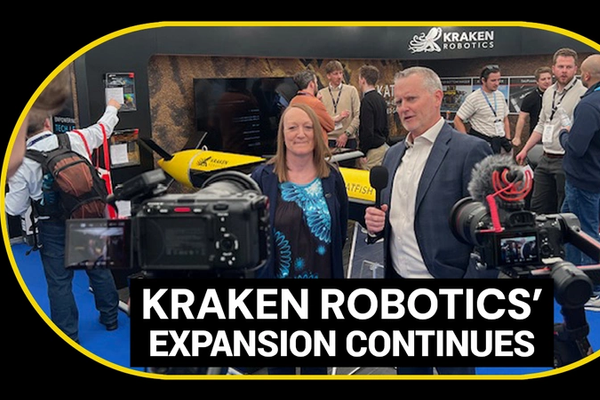
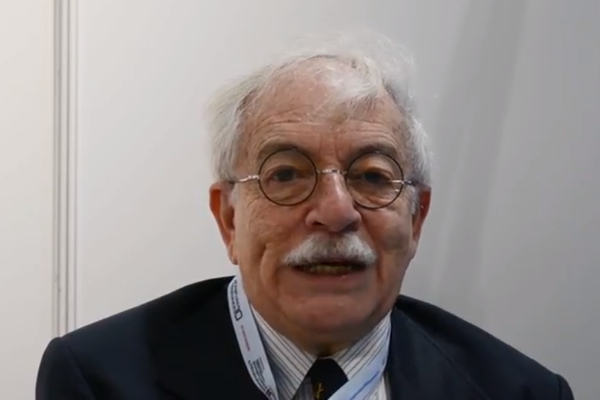
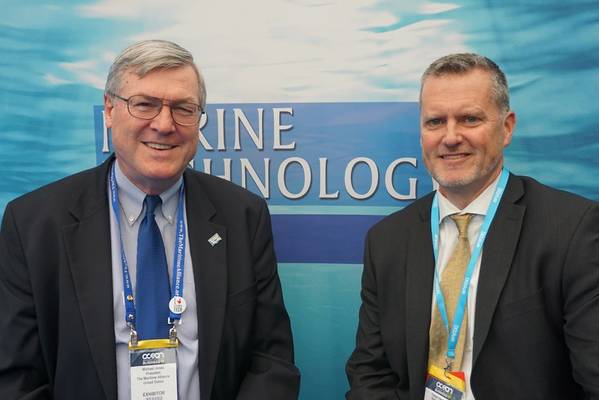
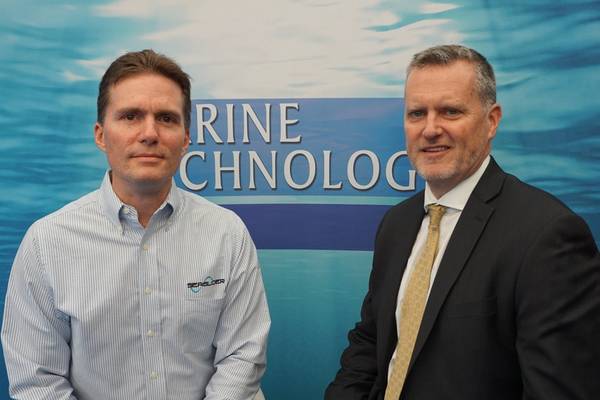
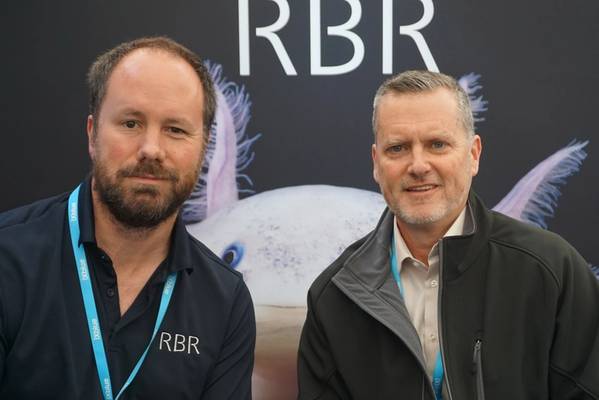
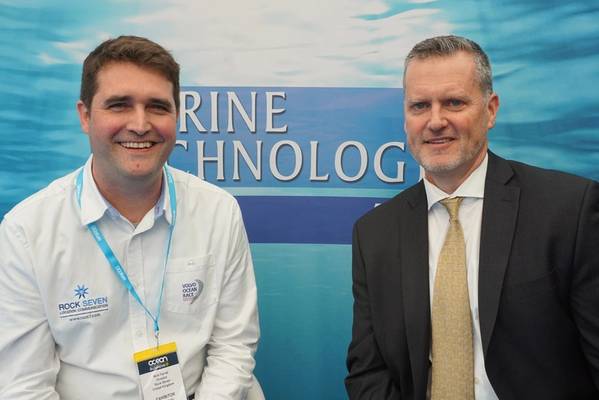
 December 2025
December 2025



